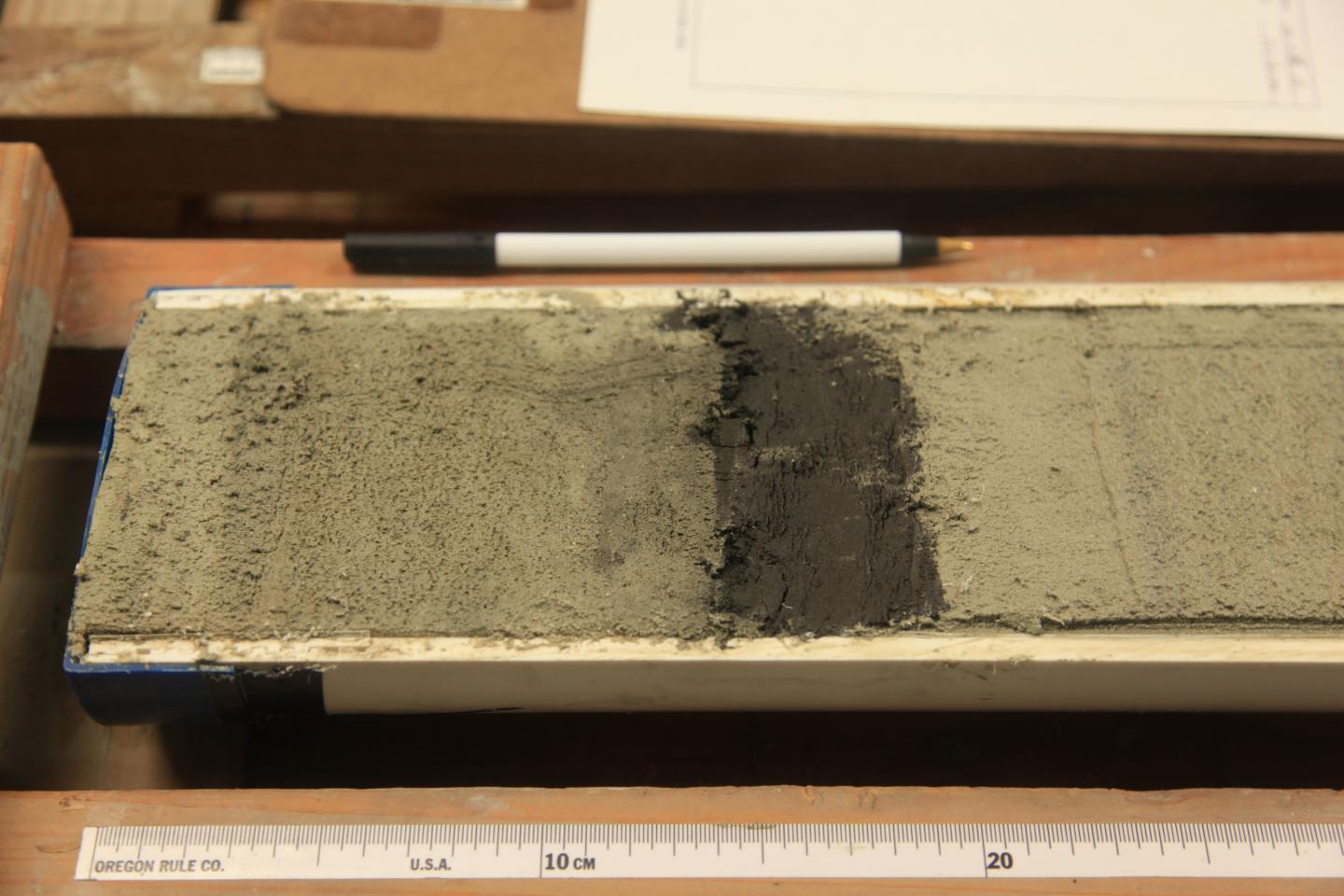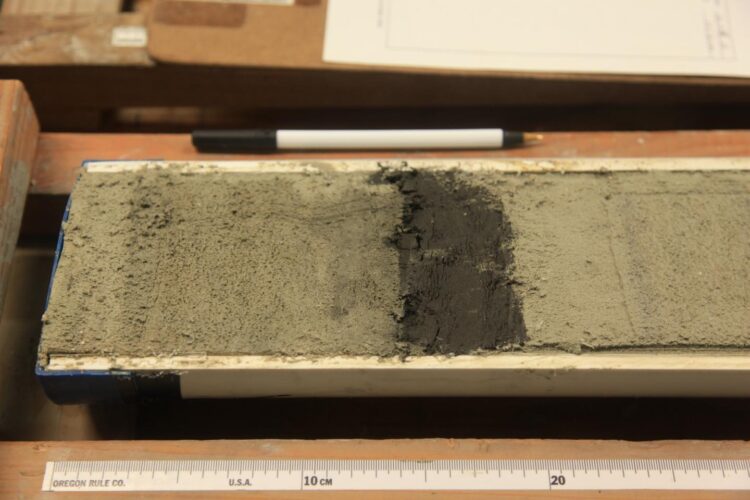A Texas A&M-led study analyzed ocean floor sediment cores to provide new insights into the relationship between deep ocean oxygenation and atmospheric carbon dioxide levels in the 50,000 years before the last ice age

Credit: Texas A&M University
Why do carbon dioxide levels in the atmosphere wax and wane in conjunction with the warm and cold periods of Earth’s past? Scientists have been trying to answer this question for many years, and thanks to chemical clues left in sediment cores extracted from deep in the ocean floor, they are starting to put together the pieces of that puzzle.
Recent research suggests that there was enhanced storage of respired carbon in the deep ocean when levels of atmospheric carbon dioxide concentrations were lower than today’s levels. But new research led by a Texas A&M University scientist has reached back even further, for the first time revealing insights into atmospheric carbon dioxide levels in the 50,000 years before the last ice age.
“One of the biggest unknowns about past climate is the cause of atmospheric carbon dioxide variability over global warm-cold cycles,” said Franco Marcantonio, lead author of the study and professor and Jane and Ken R. Williams ’45 Chair in the Department of Geology and Geophysics at Texas A&M. “Here we investigated the ‘how’ of varying carbon dioxide with the ‘where’ — namely, the Eastern Equatorial Pacific Ocean, which is an important region of the world ocean where, today, significant carbon dioxide is exhaled into the atmosphere and the greatest rates phytoplankton growth are found.”
The National Science Foundation-funded research was recently published in Scientific Reports, a Nature Research journal.
To examine ancient carbon dioxide levels, Marcantonio and a team of researchers analyzed an ocean floor sediment core extracted from the deep Eastern Equatorial Pacific Ocean. The 10-meter long core spans about 180,000 years, and the chemistry of the layers of sediment provide scientists with a window into past climates. The chemical measurements they make serve as a proxy for oxygen levels of the deep sea.
Measuring minute traces of uranium and thorium isotopes, the team was able to associate periods of increased storage of respired carbon (and low deep-sea oxygen levels) with periods of decreased global atmospheric carbon dioxide levels during the past 70,000 years.
“By comparing our high-resolution sediment record of deep-sea oxygenation in the Eastern Equatorial Pacific with other areas of the Pacific and Southern Ocean, we find that the Pacific Ocean, like the Southern Ocean, is a location for deep-ocean respired carbon storage during periods of decreased global atmospheric CO2 concentrations,” he said. “Importantly, we put constraints on the location in the water column of the extent of the respired stored carbon pool during cold periods.
“Understanding the past dynamics of Earth’s carbon cycle is of fundamental importance to informing and guiding societal policy-making in a warming world with increasing levels of atmospheric carbon dioxide.”
Co-authors of the study were Ryan Hostak, a former Texas A&M graduate student who earned his master’s degree in geology in 2019; Jennifer E. Hertzberg, who received her Ph.D. in oceanography from Texas A&M in 2015 and is now a postdoctoral researcher in the Department of Earth, Ocean and Atmospheric Sciences at Old Dominion University; and Matthew W. Schmidt, associate professor of Ocean, Earth and Atmospheric Sciences at Old Dominion. Marcantonio and his colleagues designed the study, he and Hostak performed the isotope analyses, and the team interpreted the data.
“By performing similar studies in sediment covering a wider swath of the deep Pacific Ocean, we’ll be able to spatially map the extent of this past deep pool of respired carbon,” Marcantonio said, looking forward to future research.
###
The study’s radiogenic and trace element analyses were conducted in the College of Geosciences’ R. Ken Williams Radiogenic Isotope Facility. The sediment core was extracted by Marcantonio and colleagues on an NSF-funded research cruise aboard the R/V Melville in 2010.
Media Contact
Robyn Blackmon
[email protected]
Original Source
https:/
Related Journal Article
http://dx.





